Turron - turron and Mazapan are two products made from almonds and sugars whose origin goes back centuries and centuries. It is presumed that in the Greek era a paste consisting of nuts (mainly almond) and honeys was prepared, which served the Greek athletes as an energy product to participate in the Olympics.
More recently, historical data have been found to assure that turron already existed in the town of Sexona (present Jijona) in the sixteenth century. The Arabs were the ones who introduced this sweet, and this is recognized by the Regulatory Council of Protected Geographical Indications of Turrón de Jijona and Alicante. Nevertheless, there are different versions of the origin of the turron. Some sources affirm that the turron arose after a competition proposed by the Arabs in which it was tried to look for a nutritious food that was conserved in good conditions during a long stay and that was easily transported by its armies without danger of intoxication. Other sources, however, claim that the turron arose thanks to the elaboration by a craftsman of Barcelona, surnamed Turró, which made a food with abundant raw materials of the region that would be an indispensable resource in times of scarcity and famines. The defenders of this version derive in that the turron name is born of the last name of said artisan. This version, despite its apparent simplicity, is the least supported. The charismatic jijonenco, Fernando Galiana, who dedicated many years of his life to these studies, states that the word turron comes from torrat, which was a mixture of honey and nuts that cooked directly on the fire to give a consistent and easy mass To handle. There are more versions, but these are the most expanded.
The legend
In Jijona, there is even a legend that tells us, as a story, how the turron originated:
"At that time, the King married a Scandinavian princess, so she had to come to this land leaving behind her cold country of origin. The princess felt very sad to not be able to enjoy the beautiful landscapes of her country full of perpetual snow. The king, desperate to see the new fallen queen, to avoid his sadness, had the idea of planting thousands of almond trees all around his territories around the castle. In this way, when the almond trees flourished, they sown the landscape of white tones, so that everything seemed snowed, and the princess regained her happiness. The inhabitants of Jijona, from that moment, learned to collect the fruits of the almond trees and to treat them, thus elaborating the first samples of turron and derivatives. "
And so the legend ends ... There are other cities like Toledo and Agramunt in which also have historical references of the elaboration of turron and marzipan, although Jijona stands as the city of turron and historically documents its origin. Of all is known that the consumption of turron practically comes down to the Christmas dates. Regarding this subject, it is worth noting a book by Francisco Martínez Montiño entitled "CONDUES DE CHRISTMAS", dating from 1584. Its author was the chief cook of Felipe II and it was already reflected in the custom of eating turron on Christmas dates Already in century XVI.
Most of the turron factories concentrate their production in the months leading up to Christmas (usually from September to December) in order to supply Spain and the rest of the world (Japan, USA, Cuba, Venezuela, Argentina, Costa Rica, France, Germany , Etc.) of the desired and awaited Christmas candy. The rest of the year many of them close their doors while waiting for the start of the new campaign.
Among the main problems in this sector are the stagnation of the market and the lack of manpower. It should be noted that at the beginning of the 1990s the sector suffered a serious crisis that led to the bankruptcy of large companies and put in trouble so many others, with the consequent dismissal of hundreds of workers and the destabilization of the economy. At present, the situation has improved and the figures indicate an increase in production and resources. This palpable recovery of the turronero world has alleviated hundreds of Jijonen families whose livelihood depended exclusively on the turron season
Sale of turron in the portals of houses
During a long time, especially in the late nineteenth and early twentieth centuries, many Jijonen families went to sell turron in Spain (Madrid, Barcelona, Mahón, Málaga, Valencia, Oviedo, Bilbao, Figueres, Badalona, Tarragona ...) with the difficulties that this supposed for the time. They arrived with the loaded carts and tried to sell all their merchandise to return to Jijona with their livelihood. As the business was thriving, it was quite typical to set up tents on the portals of the city's downtown houses. Today, there are still centuries-old businesses that have maintained the tradition of selling turrons and marzipans in these old and almost demolished portalitos, and even obtain greater sales in them than in new stores a posteriori. Continuing with the tradition of Jijon, most of these businesses that were initially turron, have also resulted in the sale of ice cream, although on the contrary has also occurred. As an anecdote we can tell the story of the "uncle Ostrolica", turronero in Barcelona, who rushed for the bad weather that led people to not go out to buy, decided to run an adventure to be able to sell all the turron Was left He headed for the port and embarked for an unknown destination. After a few months he returned to his natal Jijona, where his family was waiting for him. When they asked him where he had been, he could only answer what he had heard since he did not understand what his people said in this place: he said that he had been in Ostrólica or something. He had definitely been in Australia, no more, no less.















 Turron from Spain
Turron from Spain












 Marzipan
Marzipan







 Polvorones
Polvorones 





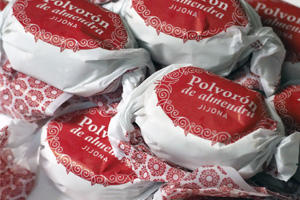
 Chocolates
Chocolates







 Sugar Almonds
Sugar Almonds

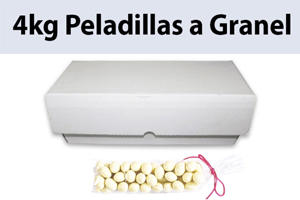
 Gifts - Bundles
Gifts - Bundles


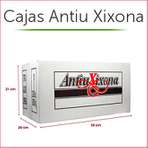
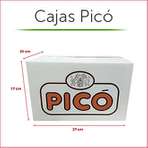
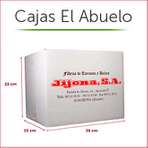
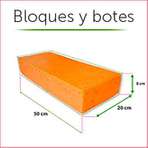
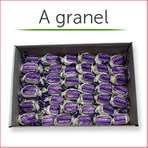
 Sweets and candies
Sweets and candies 









